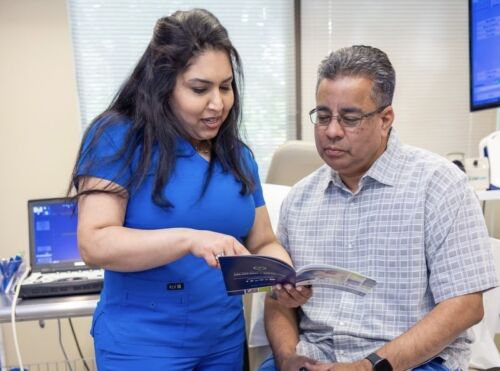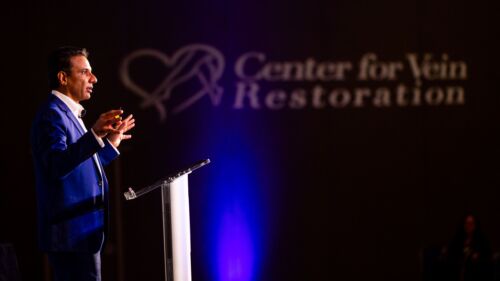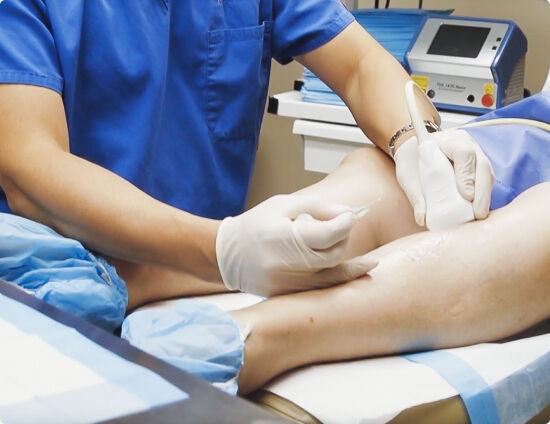Are your varicose veins looking bulgier than before? It could mean they’re getting worse. Here’s what you need to know.
You might be tempted to live with vein disease if your varicose veins aren’t causing you discomfort or displaying any symptoms. But if you’ve noticed your varicose veins are bulging a bit more than before, you should consider getting them treated, as the bulging veins could indicate that your varicose veins are getting worse.
The longer you wait, the thicker your varicose veins may get. Any uncomfortable symptoms, such as pain, cramping, and heaviness, will also worsen. What’s more, severe complications may develop the longer you delay therapy.
Here’s why those bulgier varicose veins are a definite sign you need to take care of your veins now.
Why do your varicose veins look bulgier?
Bottom line: Damaged valves are to blame! Normally, these tiny valves close tightly to push blood back to the heart. Various factors such as age, obesity, pregnancy, and a sedentary lifestyle cause the valves to weaken. As a result, blood pools within the veins. As the blood collects, superficial veins swell to contain the excess blood and become visible as varicose veins.
Venous insufficiency, the root cause of varicose veins, is a progressive condition. “Progressive” means that the condition can slowly but steadily worsen over time. This progression is what you see when your varicose veins grow thicker. As blood pools in the vein, the overwhelmed valves weaken even more, causing the varicose veins to increase in size.
Treatment for varicose veins is essential
There is no better time than the present to seek treatment for venous insufficiency and varicose veins. But treatment is essential when you notice your veins thickening and symptoms worsening. Without treatment, varicose veins could lead to excessive bleeding from the vein, difficult-to-treat skin ulcers, and even dangerous blood clots.
Varicose veins have been linked to deep vein thrombosis (DVT), a blood clot deep within the leg veins. Blood cells that cluster as circulation slows in the veins can develop into a clot. If the clot breaks free and travels to the lung, it could cause a potentially life-threatening pulmonary embolism (PE). DVT symptoms include swelling and pain, usually in one leg, and red-colored skin that is warm to the touch. Immediate treatment is necessary to prevent PE, which causes shortness of breath, a bloody cough, elevated heart rate, and chest pain. If you’re experiencing these symptoms, visit an emergency room immediately.
How to treat varicose veins
A certified vein specialist, such as the health care professionals at Center for Vein Restoration (CVR), is qualified to diagnose and treat your varicose veins. After a review of your symptoms and a physical assessment, the doctor will perform a painless ultrasound exam to see where the diseased veins are located.
Symptoms of varicose veins are often treated first with conservative approaches, such as wearing compression stockings. Exercising and maintaining your ideal weight can also reduce pain and swelling.
But such lifestyle changes, however beneficial, will not reverse the buildup of blood in the varicose vein. Only a minimally invasive, office-based procedure can relieve the discomfort. These methods use advanced techniques to eliminate the swollen vein and are completed within a brief outpatient visit.
Treat your varicose veins now!
Because varicose veins are a progressive condition, they will worsen without intervention. The physicians at CVR can reverse vein disease with various treatment methods tailored to fit your specific needs and lifestyle.
To schedule a consultation, visit www.centerforvein.com or call 240-965-3915.

 About Vein Disease
About Vein Disease
 Spider Veins
Spider Veins
 Varicose Veins
Varicose Veins
 Vein Disease Treatments
Vein Disease Treatments
 Treating Spider Veins
Treating Spider Veins
 Treating Varicose Veins
Treating Varicose Veins
 About Us
About Us
 Patient Resources
Patient Resources
 Physician Resources
Physician Resources


